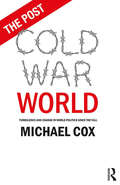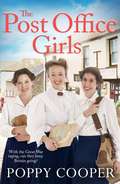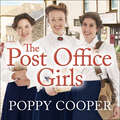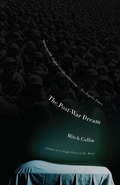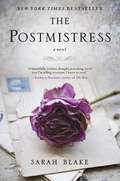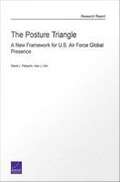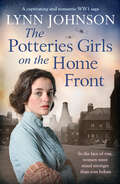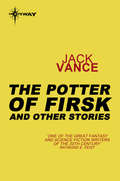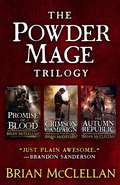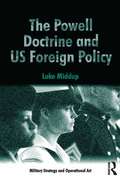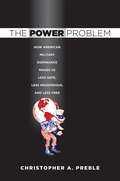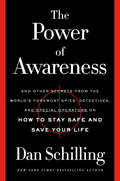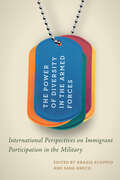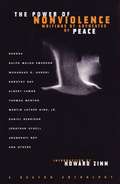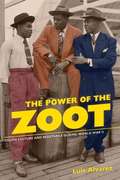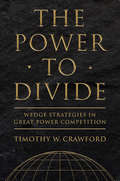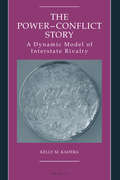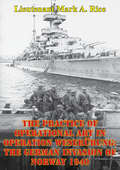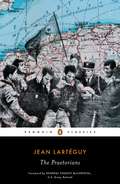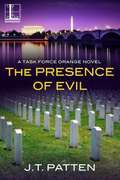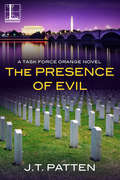- Table View
- List View
The Post Cold War World: Turbulence and Change in World Politics Since the Fall
by Michael CoxThis book by a leading scholar of international relations examines the origins of the new world disorder – the resurgence of Russia, the rise of populism in the West, deep tensions in the Atlantic alliance, and the new strategic partnership between China and Russia – and asks why so many assumptions about how the world might look after the Cold War – liberal, democratic and increasingly global – have proven to be so wrong. To explain this, Michael Cox goes back to the moment of disintegration and examines what the Cold War was about, why the Cold War ended, why the experts failed to predict it, and how different writers and policy-makers (and not just western ones) have viewed the tumultuous period between 1989 when the liberal order seemed on top of the world through to the current period when confidence in the western project seems to have disappeared almost completely.
The Post Office Girls: Book One in a heartwarming and uplifting new wartime saga series
by Poppy CooperWith the Great War raging, can they keep Britain going? 1915. On Beth Healey's eighteenth birthday, she hopes that she will be able to forget the ghastly war and celebrate. But that evening, her twin brother Ned announces that he has signed up to fight. No longer able to stand working in her parents' village shop while others are doing their bit, Beth applies to join the Army Post Office's new Home Depot on the Regent's Park, and is astounded to be accepted. She will be responsible for making sure that letters and parcels get through to the troops on the front line. Beth is thrilled to be a crucial part of the war effort and soon makes friends with fellow post girls Milly and Nora, and meets the handsome James. But just as she begins to feel that her life has finally begun, everything starts falling apart, with devastating consequences for Beth and perhaps even the outcome of the war itself. Can Beth and her new friends keep it all together and find happiness at last?
The Post Office Girls: Book One in a heartwarming and uplifting new wartime saga series
by Poppy CooperWith the Great War raging, can they keep Britain going?1915. On Beth Healey's eighteenth birthday, she hopes that she will be able to forget the ghastly war and celebrate. But that evening, her twin brother Ned announces that he has signed up to fight. No longer able to stand working in her parents' village shop while others are doing their bit, Beth applies to join the Army Post Office's new Home Depot on the Regent's Park, and is astounded to be accepted. She will be responsible for making sure that letters and parcels get through to the troops on the front line. Beth is thrilled to be a crucial part of the war effort and soon makes friends with fellow post girls Milly and Nora, and meets the handsome James. But just as she begins to feel that her life has finally begun, everything starts falling apart, with devastating consequences for Beth and perhaps even the outcome of the war itself. Can Beth and her new friends keep it all together and find happiness at last?The Post Office Girls is perfect for fans of Johanna Bell, Daisy Styles and Nancy Revell.
The Post Office Girls: Book One in a lively, uplifting new WW1 historical saga series
by Poppy CooperWith the Great War raging, can they keep Britain going? 1915. On Beth Healey's eighteenth birthday, she hopes that she will be able to forget the ghastly war and celebrate. But that evening, her twin brother Ned announces that he has signed up to fight. No longer able to stand working in her parents' village shop while others are doing their bit, Beth applies to join the Army Post Office's new Home Depot on the Regent's Park, and is astounded to be accepted. She will be responsible for making sure that letters and parcels get through to the troops on the front line. Beth is thrilled to be a crucial part of the war effort and soon makes friends with fellow post girls Milly and Nora, and meets the handsome James. But just as she begins to feel that her life has finally begun, everything starts falling apart, with devastating consequences for Beth and perhaps even the outcome of the war itself. Can Beth and her new friends keep it all together and find happiness at last?
The Post-War Dream
by Mitch CullinSixty-eight-year-old Hollis and his wife Debra have settled into their golden years in a gated community outside of Tucson, Arizona. Although they are devoted to each other, events that took place decades earlier, when Hollis fought in the Korean War, have left him with a deep-seated trauma -- and with a secret he has never been able to share with his wife. As a reluctant Hollis revisits his past after his wife becomes dangerously ill, we see just how much the years of war changed his life forever. In rapturous prose, Cullin captures in The Post-War Dream the complexity of a marriage and the indelible force of the past on one man's life.From the Trade Paperback edition.
The Postmistress
by Sarah BlakeThose who carry the truth sometimes bear a terrible weight... It is 1940. France has fallen. Bombs are dropping on London. And President Roosevelt is promising he won't send our boys to fight in "foreign wars." But American radio gal Frankie Bard, the first woman to report from the Blitz in London, wants nothing more than to bring the war home. Frankie's radio dispatches crackle across the Atlantic ocean, imploring listeners to pay attention--as the Nazis bomb London nightly, and Jewish refugees stream across Europe. Frankie is convinced that if she can just get the right story, it will wake Americans to action and they will join the fight. Meanwhile, in Franklin, Massachusetts, a small town on Cape Cod, Iris James hears Frankie's broadcasts and knows that it is only a matter of time before the war arrives on Franklin's shores. In charge of the town's mail, Iris believes that her job is to deliver and keep people's secrets, passing along the news that letters carry. And one secret she keeps are her feelings for Harry Vale, the town mechanic, who inspects the ocean daily, searching in vain for German U-boats he is certain will come. Two single people in midlife, Iris and Harry long ago gave up hope of ever being in love, yet they find themselves unexpectedly drawn toward each other. Listening to Frankie as well are Will and Emma Fitch, the town's doctor and his new wife, both trying to escape a fragile childhood and forge a brighter future. When Will follows Frankie's siren call into the war, Emma's worst fears are realized. Promising to return in six months, Will goes to London to offer his help, and the lives of the three women entwine. Alternating between an America still cocooned in its inability to grasp the danger at hand and a Europe being torn apart by war, The Postmistress gives us two women who find themselves unable to deliver the news, and a third woman desperately waiting for news yet afraid to hear it. Sarah Blake's The Postmistress shows how we bear the fact that war goes on around us while ordinary lives continue. Filled with stunning parallels to today, it is a remarkable novel.
The Posture Triangle: A New Framework for U.S. Air Force Global Presence
by Stacie L. Pettyjohn Alan J. VickU.S. Air Force (USAF) global posture--its overseas forces, facilities, and arrangements with partner nations--faces a variety of fiscal, political, and military challenges. This report seeks to identify why the USAF needs a global posture, where it needs basing and access, the types of security partnerships that minimize peacetime access risk, and the amount of forward presence that the USAF requires.
The Potteries Girls on the Home Front: A captivating and romantic WW1 saga (Potteries Girls)
by Lynn JohnsonMarch 1911: Betty Dean needs a job and somewhere to live, and eventually, a husband – according to her mother. Sent into service at Stowford House in Cheshire, where the days are long and the work is gruelling, Betty’s dreams of making something of herself seem even further away.But soon she is forced to return to The Potteries, carrying with her a dreadful secret which could leave her reputation in tatters.Could WW1 bring new opportunities or will Betty run out of options?A new job on the trams throws her a lifeline. Meeting fellow tram girls Connie and Jean brings the joy of friendship, even if Betty struggles with having to keep secrets from her new pals.When Duncan Kennedy, a shy but charming soldier, enters Betty’s life, it seems that she may finally find love. But opening herself up isn’t easy, and when he leaves for the front, she finds herself alone once again.As the Great War rumbles on, Betty’s life in The Potteries is full of its own battles…A heart-breaking WW1 saga that fans of Pam Howes and Nancy Revell will love.Readers are loving The Potteries Girls on the Home Front'Well written, with a lovely storyline and lovely characters...couldn't put it down.' ***** Reader Review'Family saga at its best. Brilliant book – can't wait to read more by this author.' ***** Reader Review‘A good cosy read, but not without a little heartbreak and some feel good moments as well to delight the reader.’ Reader ReviewPraise for Lynn Johnson’s Potteries Girls series: ‘A poignant, emotional and heart-wrenching read…best read with a box of tissues handy’ Bookish Jottings‘This truly was a fabulous story from beginning to end and I struggled to put it down!… richly detailed, beautifully written and the storyline along with the characters was enthralling’ Rose is Reading‘I highly recommend reading this and being transported back in time. An excellent historical fiction that had me compulsively turning the pages.’ Books and Bookends‘Overall, I loved it. There were lots of moments that made me gasp and others that almost made me cry, and then there were those that made me smile and sigh.’ Jess Bookish Life‘heartwarming and emotional. I absolutely love the story line…I really enjoyed the setting and the characters. If you enjoy historical fiction, this is definitely a book to read!’ Jessica Belmont Book Reviews‘I’m quite astonished this is a debut novel… The characters came alive on the page, and it’s a fully rounded story… A fabulous read’ Grace J Reviewerlady‘an emotional, captivating read which is perfect for anyone who loves a good saga!… a fantastic read that quickly drew me into the story and kept my interest throughout with its fabulous plot.’ Over The Rainbow Book Blog‘the author winds her story around your person and snares your heart… Though filled with much darkness and despair, there is also hope and love’ Insatiable Readers‘Johnson has a Cookson flair…she does capture the heart and soul of her characters.’ Cheryl M-M Book Reviews
The Potters of Firsk and Other Stories
by Jack VanceThe Potters of Firsk includes the majority of Vance's 'Magnus Ridolph' stories, previously collected in The Many Worlds of Magnus Ridolph. In the VIE edition this book is titled Gadget Stories.Contents: Planet of the Black Dust, Dead Ahead ("Ultimate Quest"), Hard Luck Diggings, Sanatoris Short-cut, The Unspeakable McInch, The Howling Bounders, The King of Thieves, The Sub-standard Sardines, To B or Not to C or to D ("Cosmic Hotfoot"), Spa of the Stars, The Enchanted Princess ("The Dreamer"), The Potters of Firsk, The Visitors ("Winner Lose All"), Plagian Siphon ("The Uninhibited Robot"; "The Planet Machine"), Dover Spargill's Ghastly Floater, Sabotage on Sulfur Planet, Three Legged Joe, Four Hundred Blackbirds, Sjambak, Parapsyche, Sail 25 ("Gateway to Strangeness"; "Dust of Far Suns").All Jack Vance titles in the SFGateway use the author's preferred texts, as restored for the Vance Integral Edition (VIE), an extensive project masterminded by an international online community of Vance's admirers. In general, we also use the VIE titles, and have adopted the arrangement of short story collections to eliminate overlaps.
The Powder Mage Trilogy: Promise of Blood, The Crimson Campaign, The Autumn Republic
by Brian McClellanIn a world where mages control gunpowder and bullets, a brilliant general must defend his country from both war and insurrection. Check out the complete Powder Mage Trilogy in this omnibus edition, a series that Brandon Sanderson called "Just plain awesome!"In Promise of Blood: Field Marshal Tamas' coup against his king sent corrupt aristocrats to the guillotine and brought bread to the starving. But it also provoked war with the Nine Nations, internal attacks by royalist fanatics. Stretched to his limit, Tamas is relying heavily on his few remaining powder mages, including the embittered Taniel, a brilliant marksman who also happens to be his estranged son, and Adamat, a retired police inspector whose loyalty is being tested by blackmail.In The Crimson Campaign: Drastically outnumbered and pursued by the enemy's best, Tamas must lead his men on a reckless march through northern Kez to safety, and back over the mountains so that he can defend his country from an angry god, Kresimir.In The Autumn Republic: Field Marshal Tamas returns to his beloved country to find that for the first time in history, the capital city of Adro lies in the hands of a foreign invader. His son is missing, his allies are indistinguishable from his foes, and reinforcements are several weeks away.
The Powell Doctrine and US Foreign Policy (Military Strategy and Operational Art)
by Luke MiddupThe Vietnam War is one of the longest and most controversial in US history. This book seeks to explore what lessons the US military took from that conflict as to how and when it was appropriate for the United States to use the enormous military force at its disposal and how these lessons have come to influence and shape US foreign policy in subsequent decades. In particular this book will focus on the evolution of the so called ’Powell Doctrine’ and the intellectual climate that lead to it. The book will do this by examining a series of case studies from the mid-1970s to the present war in Afghanistan.
The Power Of One: Young Readers' Edition (Popular Penguins Ser.)
by Bryce CourtenayIn 1939, as Hitler casts his enormous, cruel shadow across the world, the seeds of apartheid take root in South Africa. There, a boy called Peekay is born. His childhood is marked by humiliation and abandonment, yet he vows to survive and conceives heroic dreams, which are nothing compared to what life actually has in store for him. He embarks on an epic journey through a land of tribal superstition and modern prejudice where he will learn the power of words, the power to transform lives and the power of one.
The Power Problem: How American Military Dominance Makes Us Less Safe, Less Prosperous, and Less Free
by Christopher A. PrebleNumerous polls show that Americans want to reduce our military presence abroad, allowing our allies and other nations to assume greater responsibility both for their own defense and for enforcing security in their respective regions. In The Power Problem, Christopher A. Preble explores the aims, costs, and limitations of the use of this nation's military power; throughout, he makes the case that the majority of Americans are right, and the foreign policy experts who disdain the public's perspective are wrong. <p><p> Preble is a keen and skeptical observer of recent U.S. foreign policy experiences, which have been marked by the promiscuous use of armed intervention. He documents how the possession of vast military strength runs contrary to the original intent of the Founders, and has, as they feared, shifted the balance of power away from individual citizens and toward the central government, and from the legislative and judicial branches of government to the executive. In Preble's estimate, if policymakers in Washington have at their disposal immense military might, they will constantly be tempted to overreach, and to redefine ever more broadly the "national interest." <p> Preble holds that the core national interest―preserving American security―is easily defined and largely immutable. Possessing vast military power in order to further other objectives is, he asserts, illicit and to be resisted. Preble views military power as purely instrumental: if it advances U.S. security, then it is fulfilling its essential role. If it does not―if it undermines our security, imposes unnecessary costs, and forces all Americans to incur additional risks―then our military power is a problem, one that only we can solve. As it stands today, Washington's eagerness to maintain and use an enormous and expensive military is corrosive to contemporary American democracy.
The Power and the Glory
by William C. HammondThe Power and the Glory is the third novel in William C. Hammond's rousing nautical fiction series. This volume is set in the late 1790s during the Quasi-War with France and offers readers a look at the new American Navy during the Age of Fighting Sail. Following in the wake of his previous novels, A Matter of Honor and For Love of Country, it features the adventures of the seafaring Cutler family of Hingham, Massachusetts, and an ever-expanding cast of characters-some real, some fictional-that includes Lt. Richard Cutler, along with Capt. Thomas Truxtun, Capt. Silas Talbot, and other naval heroes personifying the best of American honor and courage as they confront French pirates off the coast of Nantucket and heavily armed French frigates in the Caribbean.Hammond packs his book with electrifying sea battles and daring challenges to French colonial rule in Haiti and the West Indies. He also offers captivating glimpses into the everyday life of the era, from the bedroom of the Cutler clapboard home in Hingham, to the family's sugarcane plantation in Barbados, to Admiral Sir Hyde Parker's flagship in Jamaica. And at the center of all the excitement, passion, and intrigue are two of the finest frigates ever constructed, USS Constellation and her sister ship, USS Constitution. Lauded for his careful research, attention to detail, and thorough knowledge of the ways of the sea, Hammond brings history alive while telling a rollicking good tale.
The Power of Awareness: And Other Secrets from the World's Foremost Spies, Detectives, and Special Operators on How to Stay Safe and Save Your Life
by Dan SchillingA spy is suddenly aware she's being stalked through the streets of an overseas city. A special ops soldier intuitively recognizes something's "off" during a high-risk mission. In these life-threatening situations experts know exactly how to use their senses and what actions to take. At the intersection of The Gift of Fear and Make Your Bed, The Power of Awareness will make sure you will, too.In his empowering book, Dan Schilling shares how to identify and avoid threats using situational awareness and intuition just like the pros. Told with wit and wisdom, this compelling guide uses harrowing stories from Dan's special operations career and those of other experts to outline six easily implemented rules you can apply anywhere to improve your personal safety.It incorporates exercises to understand how situational awareness works in real life, how to better listen to your intuition, and when confronted by a criminal how to make a plan and take action with confidence—so you can escape the threat before it's too late.He also includes tools on how to secure your home or hotel room, use public transportation, plan international travel, and reduce your criminal target appeal and exposure, in addition to how to escape an active shooter situation. As a bonus, you'll even learn how to survive a date without getting murdered.By the last page you'll know that your own Power of Awareness can save your life.
The Power of Diversity in the Armed Forces: International Perspectives on Immigrant Participation in the Military (Human Dimensions in Foreign Policy, Military Studies, and Security Studies)
by Grazia Scoppio and Sara GrecoWhile countries throughout the world rely on immigrants to support their populations and economies, access to the military is limited, denied to those who have not yet acquired citizenship.Precluding immigrants from serving in their host country’s armed forces is an issue of moral equity and operational effectiveness. Allowing immigrants to enlist ensures that the military represents the population it serves and encourages inclusivity and cultural change within the institution, while also creating a more effective military force. The Power of Diversity in the Armed Forces investigates how different countries approach the inclusion or exclusion of immigrants in their armed forces and offers immigrant military participation as a pathway to citizenship and a way to foster greater societal integration and achieve a more equitable, diverse, and inclusive military.By surveying international perspectives on immigrant and non-citizen military participation in twelve countries, The Power of Diversity in the Armed Forces introduces and examines a new way to unlock the power of diversity in military organizations globally.
The Power of Nonviolence: Writings by Advocates of Peace
by Howard Zinn[Back Cover] The Power of Nonviolence, the first anthology of alternatives to war with a historical perspective - with an introduction by Howard Zinn about September 11 and the U.S. response to the terrorist attacks -presents the most salient and persuasive arguments for peace in the last 2,500 years of human history. Arranged chronologically, covering the major conflagrations in the world, The Power of Nonviolence is a compelling step forward in the study of pacifism, a timely anthology that fills a void for people looking for responses to crises that are not based on guns or bombs. Included are some of the most original thinkers and writings about peace and nonviolence-Buddha, Scott Nearing, Henry David Thoreau's "Civil Disobedience," Jane Addams, William Penn on the end of war, Dorothy Day's "Pacifism," Erich Fromm, and Rajendra Prasad. Supplementing these classic voices are more recent advocations for peace: Albert Camus's "Neither Victims nor Executioners," A. J. Muste's impressive "Getting Rid of War," Martin Luther King's influential "Declaration of Independence from the War in Vietnam," and Arundhati Roy's "War Is Peace," plus many others.
The Power of a SEAL
by Anne ElizabethWith over two decades of experience, Navy SEAL Leaper Lefton is bringing his expertise to young and impressionable SEAL trainees in BUD/s. As an instructor, he knows he must prepare them for all kinds of situations—and there's a perfect opportunity for hands-on training when he spots a woman in danger in rough water. Kerry Hamilton, a marine mammal veterinarian for the U.S. Navy is beyond grateful when Leaper saves her from the rough seas, and their attraction is instant. But after everything Leaper has been through, can he truly love again? And is Kerry willing to give him the chance?West Coast NAVY Seals Series:A SEAL at Heart (Book 1)Once a SEAL (Book 2)A SEAL Forever (Book 3)The Soul of a SEAL (Book 4)The Power of a SEAL (Book 5)
The Power of the Zoot: Youth Culture and Resistance During World War II
by Luis AlvarezProviding a new history of youth culture based on rare, in-depth interviews with former zoot-suiters, Luis Alvarez explores race, region, and the politics of culture in urban America during World War II. He argues that Mexican American and African American youths, along with many nisei and white youths, used popular culture to oppose accepted modes of youthful behavior, the dominance of white middle-class norms, and expectations from within their own communities.
The Power to Divide: Wedge Strategies in Great Power Competition (Cornell Studies in Security Affairs)
by Timothy W. CrawfordTimothy W. Crawford's The Power to Divide examines the use of wedge strategies, a form of divisive statecraft designed to isolate adversaries from allies and potential supporters to gain key advantages. With a multidimensional argument about the power of accommodation in competition, and a survey of alliance diplomacy around both World Wars, The Power to Divide artfully analyzes the past and future performance of wedge strategy in great power politics. Crawford argues that nations attempting to use wedge strategy do best when they credibly accommodate likely or established allies of their enemies. He also argues that a divider's own alliances can pose obstacles to success and explains the conditions that help dividers overcome them. He advances these claims in eight focused studies of alliance diplomacy surrounding the World Wars, derived from published official documents and secondary histories. Through those narratives, Crawford adeptly assesses the record of countries that tried an accommodative wedge strategy, and why ultimately, they succeeded or failed. These calculated actions often became turning points, desired or not, in a nation's established power. For policymakers today facing threats to power from great power competitors, Crawford argues that a deeper historical and theoretical grasp of the role of these wedge strategies in alliance politics and grand strategy is necessary. Crawford drives home the contemporary relevance of the analysis with a survey of China's potential to use such strategies to divide India from the US, and the United States' potential to use them to forestall a China-Russia alliance, and closes with a review of key theoretical insights for policy.
The Power-Conflict Story: A Dynamic Model of Interstate Rivalry
by Kelly M. KaderaThe Power-Conflict Story explains patterns of behavior in major world rivalries since 1816. Kelly M. Kadera carefully lays out the dynamic connections between two rival nations' power relationship and their conflictual interactions with one another. Rivals accumulate power and use conflict as a method of reducing their opponent's power level. But conflict is costly because it invites reciprocation from the opponent who has similar motives. Applying the formal model that she has developed, Kadera makes some interesting and novel predictions about which types of rivals win and what strategies they use. The empirical record on national power levels and interstate conflict convincingly support these predictions. Examples include the rise of the United States as a world power and the corresponding fall of British hegemony near the turn of the last century; Germany's unsuccessful attempt to overtake Britain during the Second World War; and Russia's rivalry with China during the early 1900s. One of the central contributions of the book's explanation of interstate rivalry is the integration of two opposing schools of thought, balance of power theory and power transition theory. This integration is accomplished by the author's dynamic formal model that emphasizes fluctuations in conflict behavior under different power relationships as well as shifts in power levels resulting from natural growth and resource depletion. The formal model and its analysis are presented in a conversational manner, making it accessible to the reader. The Power-Conflict Story will appeal to students and scholars of international relations, world history, formal modeling, applied mathematics, numerical methods, and research methodology. Kelly M. Kadera is Assistant Professor of Political Science, University of Iowa.
The Practice Of Operational Art In Operation Weserübung: The German Invasion Of Norway 1940
by Lieutenant Mark A. RiceThe planning and execution of Operation Weserübung was the first major joint operation of its kind in history utilizing naval, ground, air, and airborne forces. Its conduct proves to be one of the most noteworthy applications of operational art and the principles of war during all of World War II. The principles of surprise and security were the most critical in the German success. The German planning taking into account and exploiting the operational factors of time, space and force are another key element in why this operation is worthy of further analysis and study. Additionally, the operational lessons learned that could be applied from the belligerents' experiences further illustrate several important lessons that can apply today. From the Germans we saw the importance of planning around apparent disadvantages, command and control as it relates to operational objectives and commanders intent, and the importance of initiative in military operations. From the British, the pitfalls of mirror imaging and a lack of decisiveness can prove fatal in military operations. Lastly, from the Norwegian side we see the importance of national defense for maintaining a nations' own self-determination against outside belligerents.
The Praetorians
by General Stanley Mcchrystal Xan Fielding Jean LarteguyJean Lartéguy's unflinching sequel to The Centurions, a searing novel of modern warfare admired by military experts, with a foreword by General Stanley McChrystal Based on the events of May 1958 in France and Algeria, The Praetorians picks up in the footsteps of The Centurions, which was called "a stunning reflection of modern war" by Stanley McChrystal. After turning to tactics of guerilla warfare, a group of French paratroopers serving in the Algerian War is called to answer for actions they consider necessary, however immoral. Fearing another loss of French honor, they plot a coup that results in the return to power of Charles de Gaulle and the death of one of their own. With resonance to modern conflicts in Iraq, Afghanistan, and elsewhere, The Praetorians further develops some of Lartéguy's most persistent and pertinent themes: counterinsurgency, the ugly, morally conflicted nature of modern war, and the seemingly unbridgeable gulf between the experiences of soldiers and of the civilians they serve. For more than seventy years, Penguin has been the leading publisher of classic literature in the English-speaking world. With more than 1,700 titles, Penguin Classics represents a global bookshelf of the best works throughout history and across genres and disciplines. Readers trust the series to provide authoritative texts enhanced by introductions and notes by distinguished scholars and contemporary authors, as well as up-to-date translations by award-winning translators.
The Presence Of Evil (A Task Force Orange Novel #2)
by J. T. PattenIntelligence and counter-terrorism expert J.T. Patten uncovers the ultra top-secret war against terror in his explosive black-ops series... <p><p> No Mission Is Impossible <p> Drake Woolf is the perfect throwaway agent-a deadly, invisible force able to handle the blackest of black-ops missions. No one's better when it comes to search and destroy. But his lethal drive feeds a relentless hunger. It's all his handlers at Task Force Orange can do to point him at the right targets. This time he's up against a massive, global conspiracy. In his deadly crosshairs are a Venezuelan assassin, hordes of elite Iranian terrormasters, and a beautiful and wily FBI counterterrorist agent. Drake's aim is flawless but his judgments are all over the place. If he doesn't get it right this time, it will be Hell on Earth.
The Presence of Evil (A Task Force Orange Novel #2)
by J.T. Patten“J.T. Patten’s Buried in Black takes readers deep into the shadows with an explosive narrative that could only have been written by a man who has been there himself. Buried in Black delivers on action, intrigue, and excitement!”—Mark Greaney, #1 New York Times bestselling author of Agent in PlaceTHE MAN FROM ORANGE Intelligence and counterterrorist expert J.T. Patten uncovers the ultra top-secrect war against terror in his explosive black-ops series … NO MISSION IS IMPOSSIBLE Drake Woolf is the perfect throwaway agent—a deadly, invisible force able to handle the blackest of black-ops missions. No one’s better when it comes to search and destroy. But his lethal drive feeds a relentless hunger. It’s all his handlers at Task Force Orange can do to point him at the right targets. This time he’s up against a massive, global conspiracy. In his deadly crosshairs are a Venezuelan terrorist, hordes of elite Iranian assassins, and a beautiful and wily FBI counterintelligence agent. Drake’s aim is flawless but his judgments are all over the place. If he doesn’t get it right this time, it will be Hell on Earth. Raves for J.T. Patten “J.T. Patten has done all the research. All you need to do is hang on for the ride.” —Sean Naylor, Bestselling Author of Relentless Strike and Not a Good Day to Die "Primed Charge reads like a throwback to when action movies didn't suck. J.T. Patten, with his penchant for been-there-done-that authenticity, remains an author to watch closely."—The Real Book Spy
